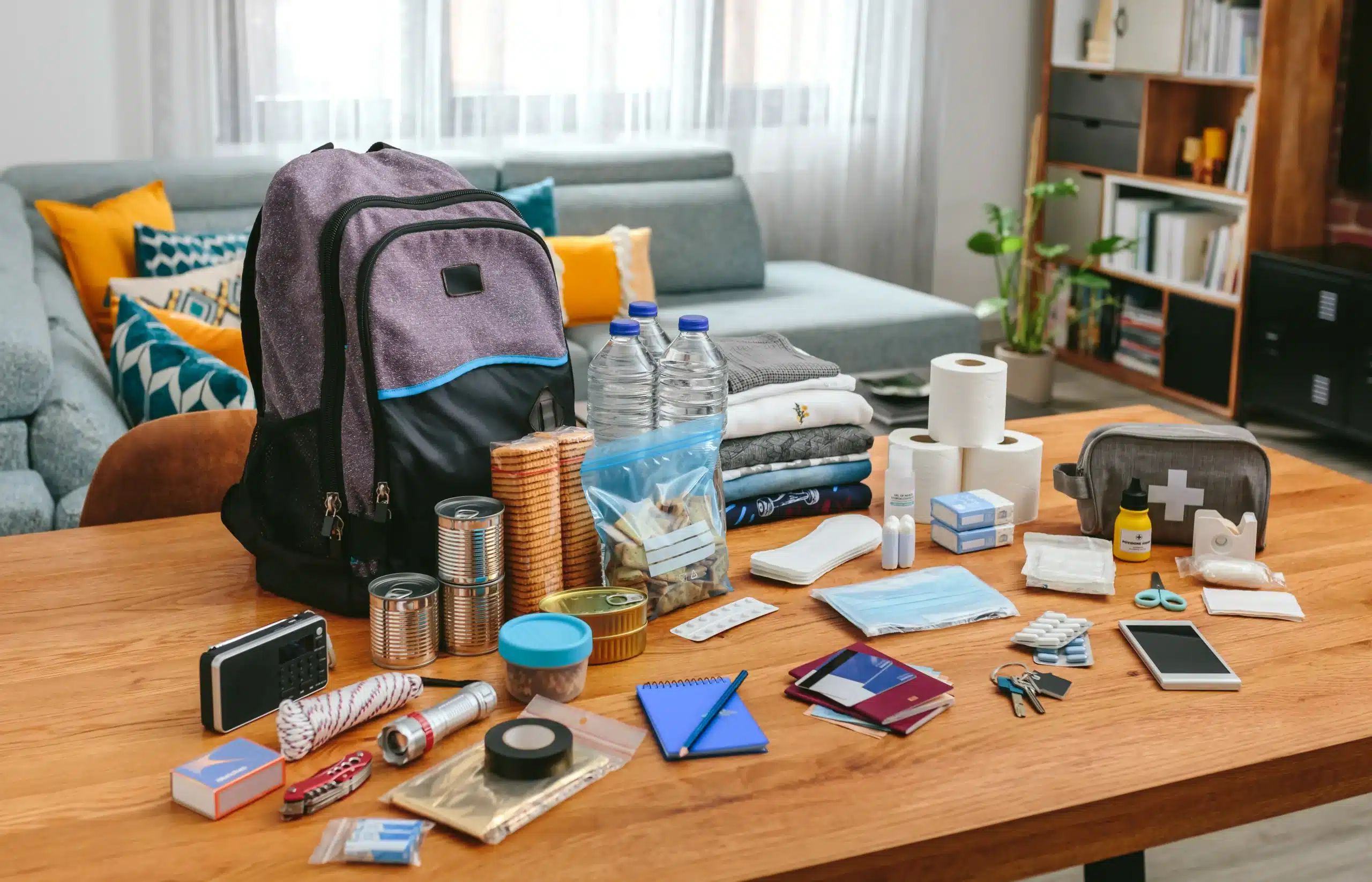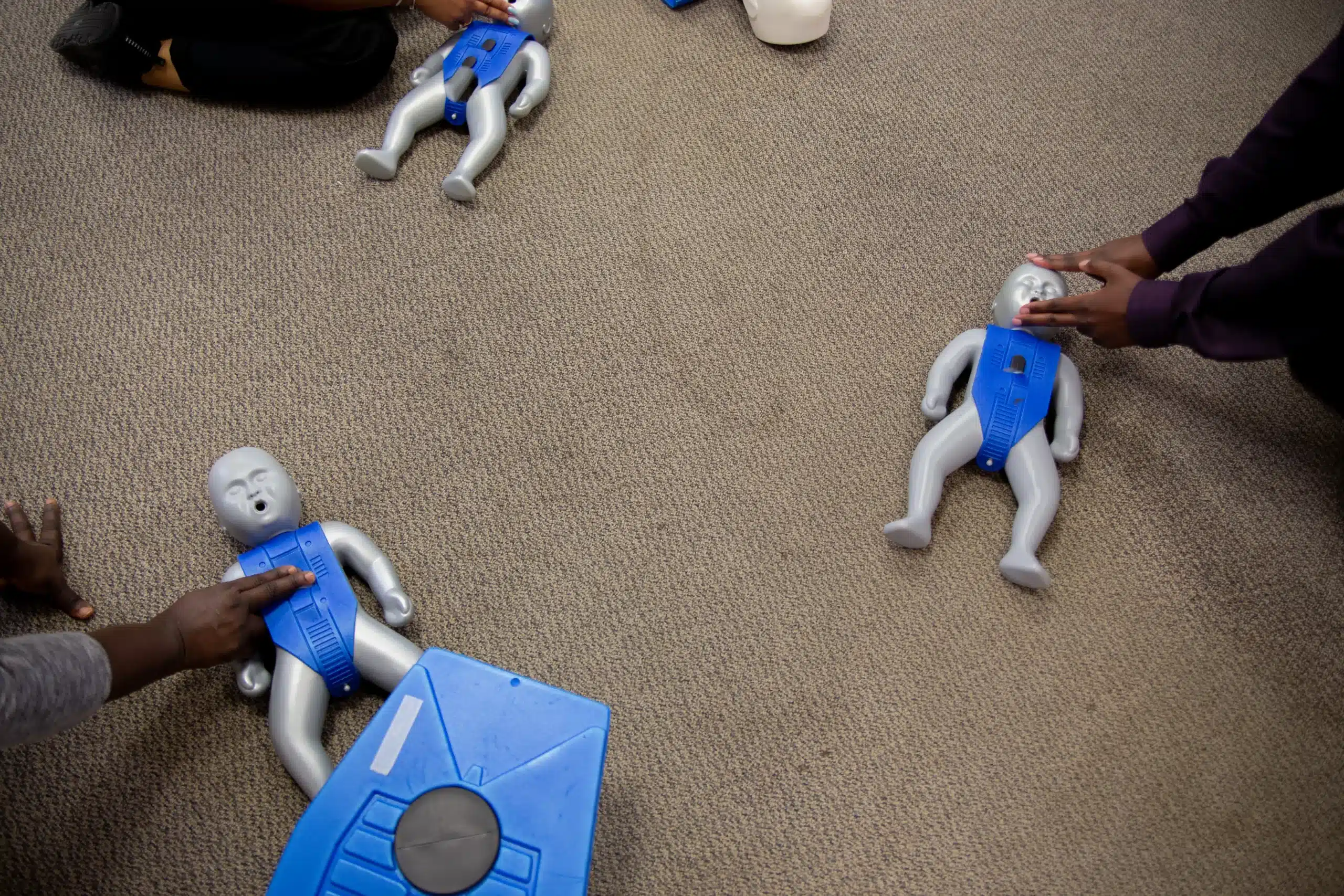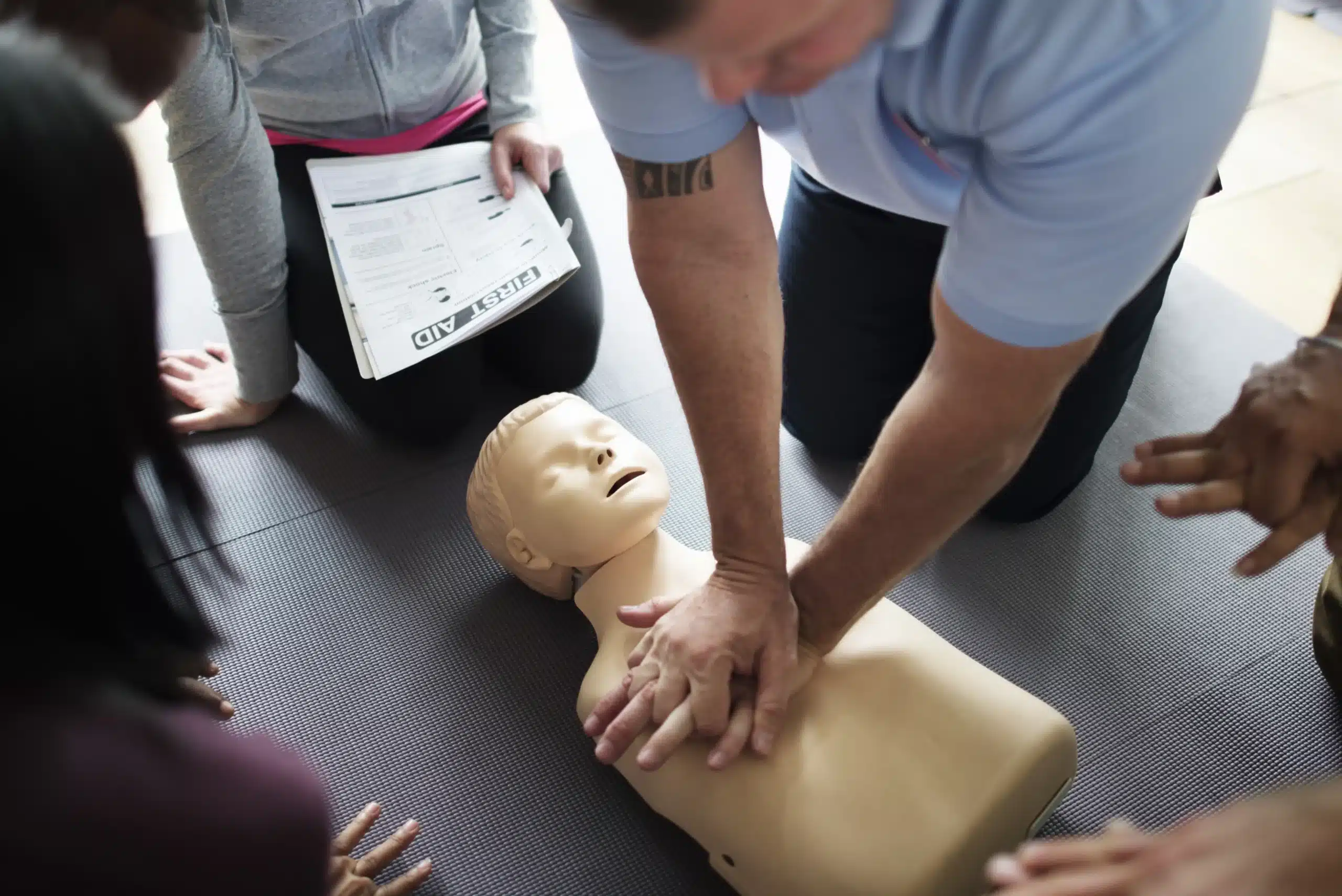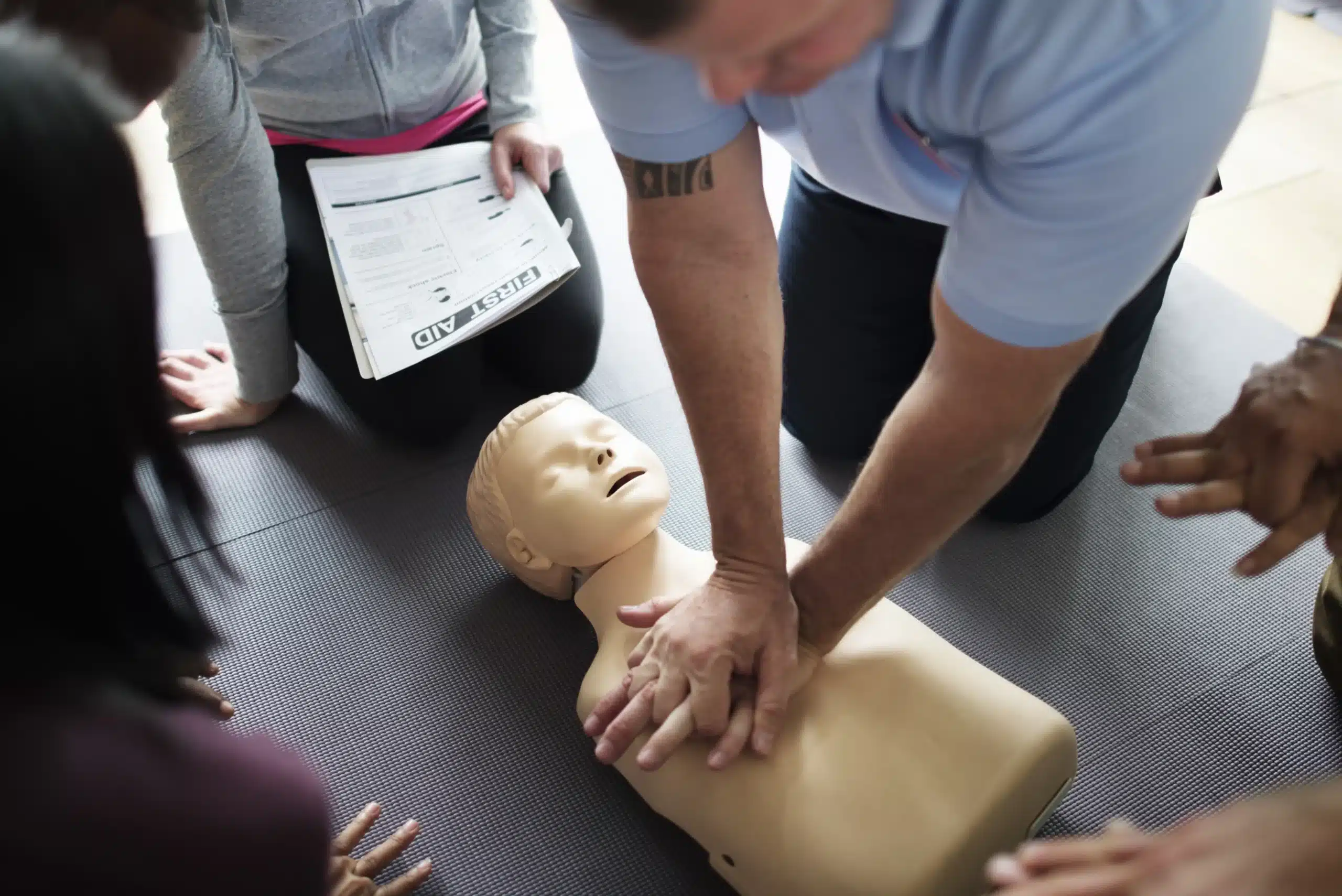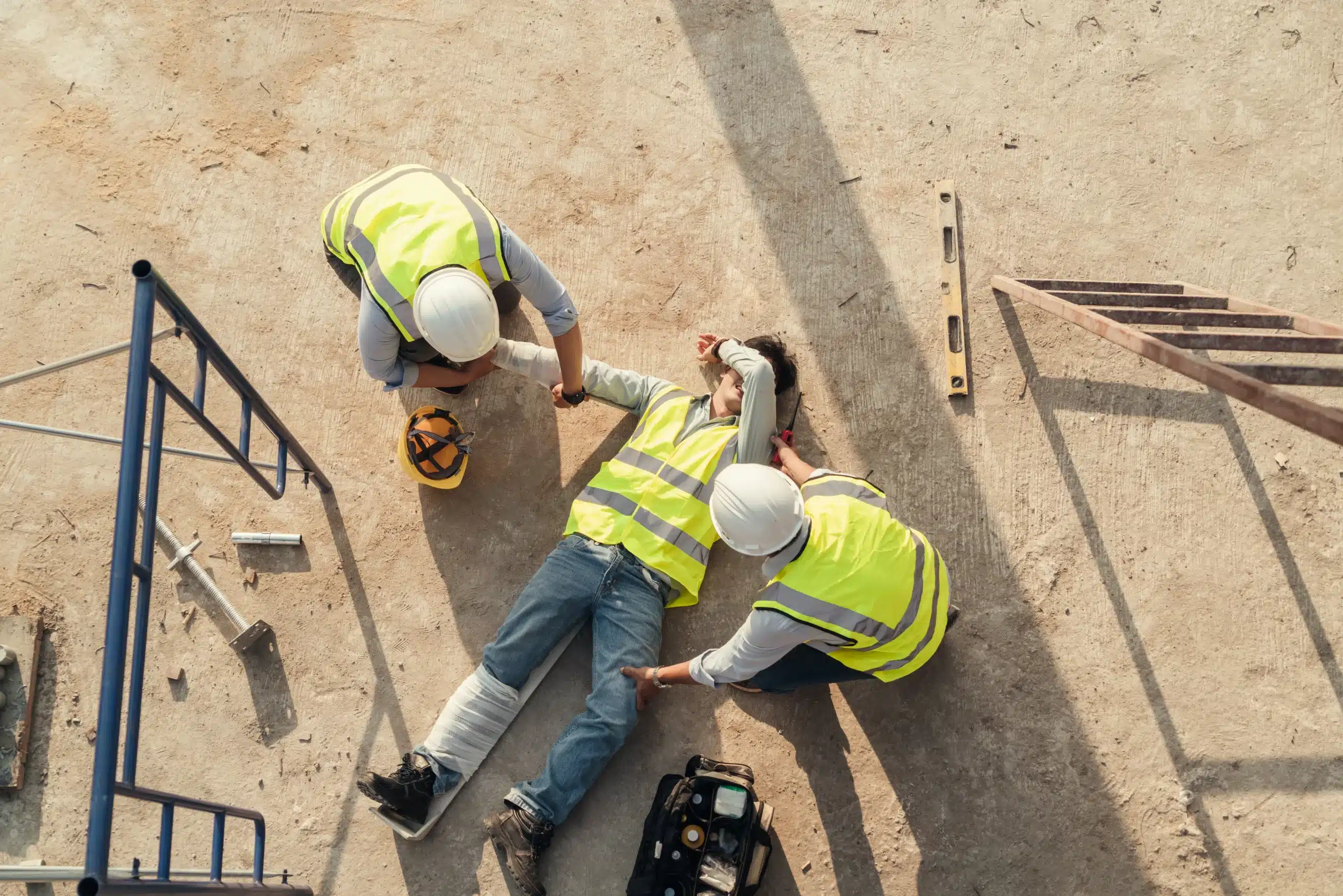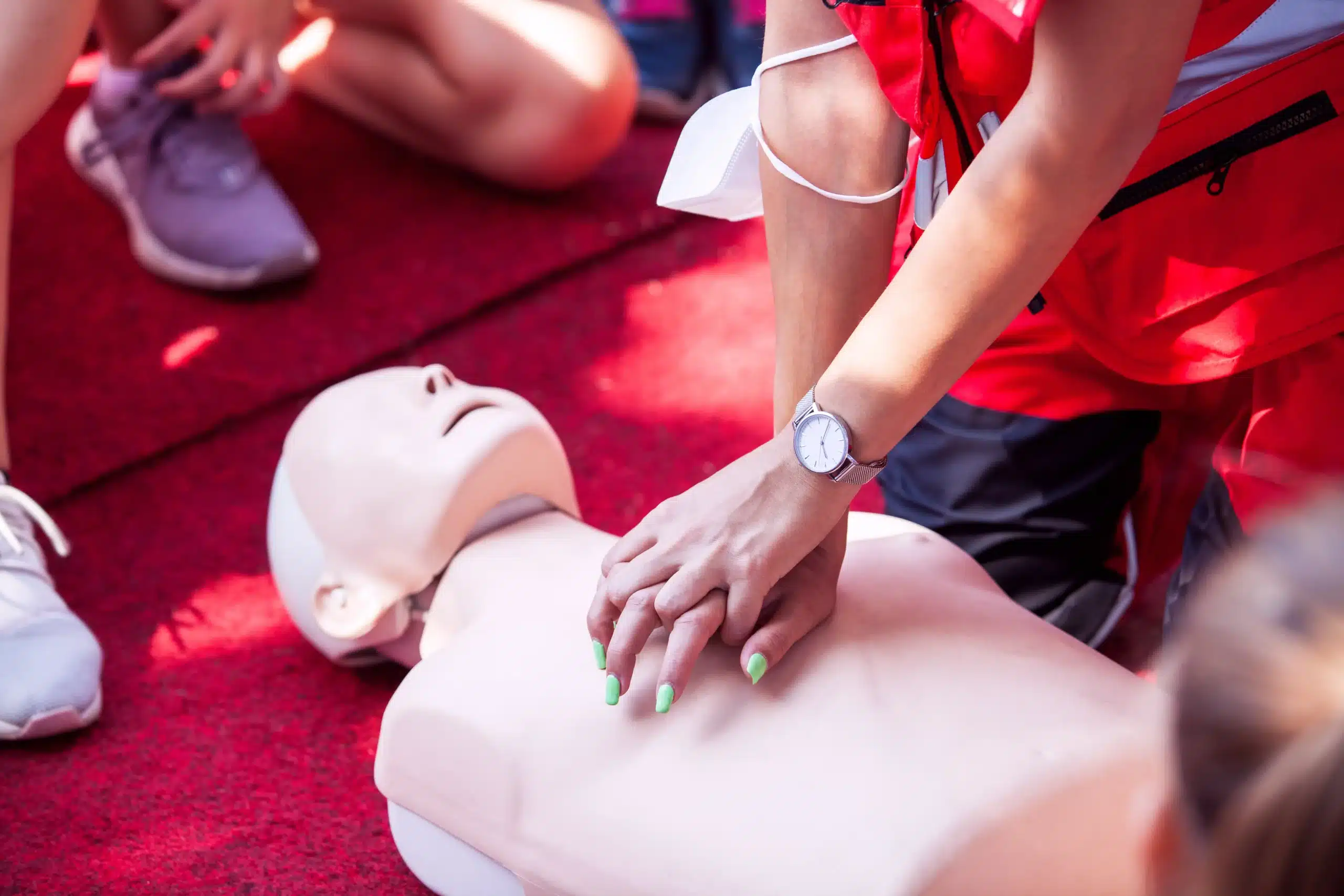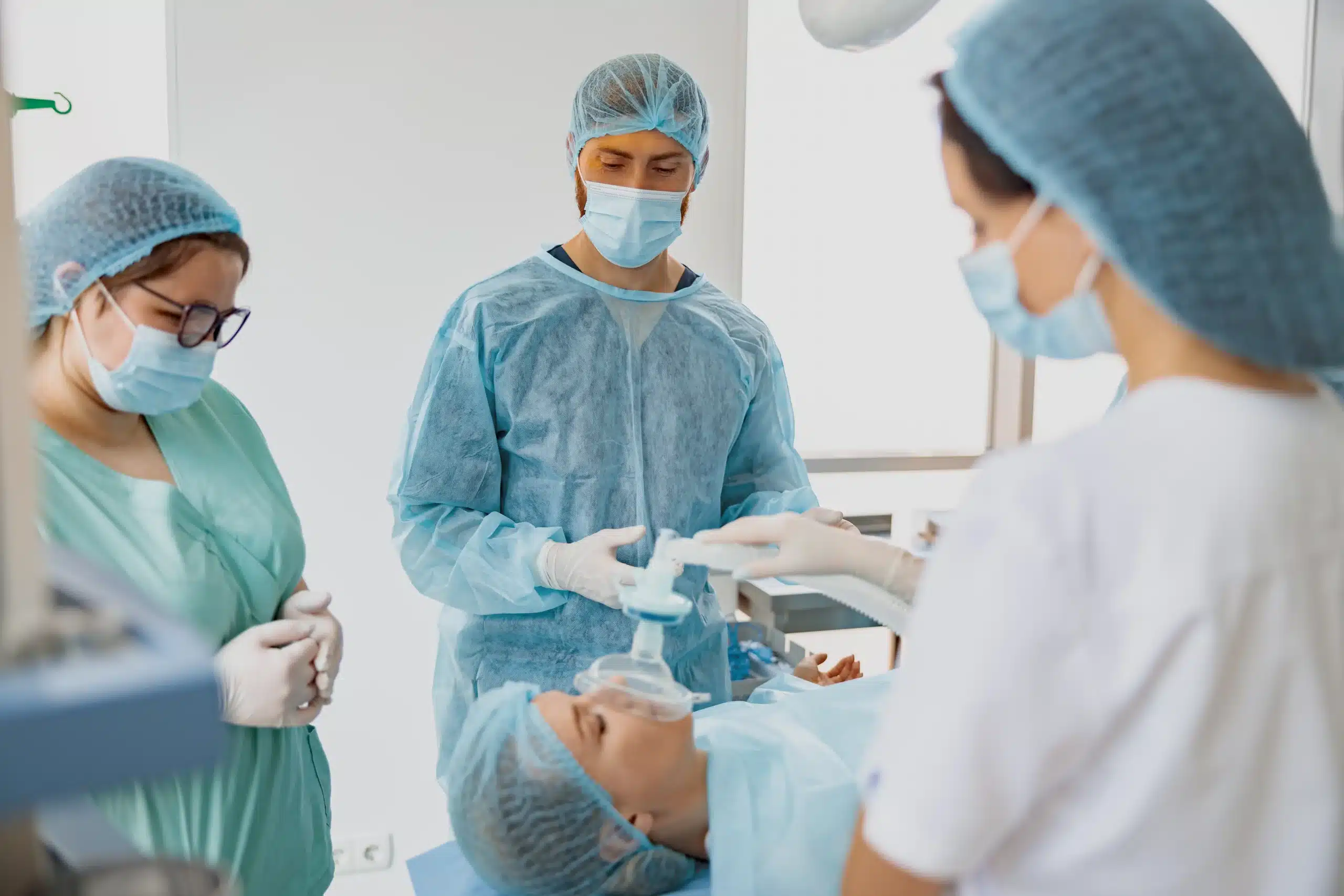Are you ready to take the leap and become BLS certified? Basic Life Support is a powerful skillset that empowers you to respond effectively in medical emergencies, providing crucial care in those critical first few minutes. This comprehensive guide will answer all your questions about BLS, from understanding the core concepts to finding the right “BLS classes near me.” We’ll explore the different training options, discuss what to expect in a BLS class, and delve into the costs and long-term value of this life-saving certification. Let’s get started and equip you with the confidence and skills to make a real difference.
Key Takeaways
- BLS certification equips you with life-saving skills applicable in various emergencies. Find a training program that fits your schedule and learning style, whether it’s in-person, blended, or online learning combined with in-person skills practice.
- Choosing a reputable BLS provider matters. Look for accreditation from organizations like the American Heart Association or the American Red Cross, and check reviews to ensure quality instruction and a positive learning environment. Consider factors like instructor experience and available resources when making your decision.
- Your BLS journey continues after certification. Stay current with refresher courses, explore advanced certifications like ACLS and PALS, and connect with the BLS community to expand your knowledge and maintain your confidence.
What is BLS?
Definition and Importance
Basic Life Support (BLS) is a crucial certification for healthcare providers like doctors, nurses, paramedics, and other first responders. It covers core life-saving techniques that build upon standard CPR. BLS focuses on recognizing and responding to life-threatening emergencies, including cardiac arrest, respiratory distress, and choking. It emphasizes early intervention, high-quality chest compressions, and effective ventilation. This training is essential because it empowers individuals to provide immediate care in critical situations, potentially bridging the gap until advanced medical help arrives. The goal of BLS is to improve patient outcomes and increase the chances of survival. For a deeper understanding of the distinctions between BLS and CPR, the Red Cross offers a helpful comparison. Redwood City CPR Classes offers BLS certification courses for healthcare providers and the general public.
BLS Skills You’ll Learn
In a BLS course, you’ll gain practical skills and theoretical knowledge. The curriculum typically includes adult, child, and infant CPR techniques, along with how to use an Automated External Defibrillator (AED). You’ll also learn how to relieve airway obstructions in both conscious and unconscious individuals. Many courses use a scenario-based learning approach, allowing you to practice your skills and develop critical thinking in realistic emergency situations. This hands-on training builds confidence and prepares you to respond effectively under pressure. The American Red Cross provides further details on their BLS training program, which covers many of the same skills. Whether you’re a healthcare professional or simply want to be prepared for emergencies, BLS certification provides valuable skills that can make a real difference.
Find BLS Classes Near You
Finding the right BLS class depends on your learning style and schedule. Let’s explore the different options available: in-person, online, and blended learning.
In-Person Classes
In-person BLS classes offer a hands-on learning experience crucial for mastering these life-saving skills. You’ll work directly with instructors, practice on mannequins, and get real-time feedback. This immersive environment helps build muscle memory and confidence, ensuring you’re prepared to respond effectively in a real emergency. Redwood City CPR Classes offers in-person training—check our BLS course page for more information. For those who thrive in a traditional classroom setting and value direct interaction, in-person training is an excellent choice. The American Red Cross also offers a variety of in-person BLS training courses.
Online BLS Courses
Online BLS courses offer flexibility and convenience, allowing you to learn at your own pace and on your own schedule. However, keep in mind that while online courses cover essential theory, the American Heart Association (AHA) requires an in-person skills assessment component for certification. A fully online BLS certification isn’t sufficient for AHA certification. Think of online learning as a valuable tool for absorbing information beforehand, allowing you to make the most of your in-person skills session.
Blended Learning
Blended learning combines the best of both worlds: online convenience and hands-on practice. You’ll typically complete the theoretical portion online, using interactive modules and videos, and then attend an in-person session to practice and demonstrate your skills. This approach can be particularly helpful for those with busy schedules or who prefer a more comprehensive learning experience. The American Red Cross also highlights the effectiveness of blended learning for BLS certification.
Choose a Reputable BLS Provider
Finding the right BLS provider is just as important as understanding the material. Here’s how to make sure you’re choosing a program that meets your needs and provides high-quality training.
Online Search Tools & Directories
Start your search using online tools like Google Maps, Yelp, and even the American Heart Association’s website. Searching for “BLS classes near me” is a great starting point. These resources can help you locate nearby training centers and compare what they offer. As you explore options, remember that AHA-approved BLS certification is often a requirement for healthcare professionals and ensures your training aligns with the highest standards. For those in and around Redwood City, Redwood City CPR Classes offers comprehensive BLS programs.
Check Accreditation and Certification
Once you’ve identified a few potential providers, verify their accreditation and certifications. Legitimate training centers should be accredited by recognized organizations like the American Heart Association (AHA) or the American Red Cross. The American Red Cross, for example, holds joint accreditation from several leading medical education councils, ensuring their courses meet rigorous standards. This step confirms the provider’s commitment to quality and ensures your certification will be widely accepted.
Evaluate Instructors
The quality of instruction significantly impacts your learning experience. Look for instructors with real-world experience in healthcare or emergency response. Experienced instructors can offer practical insights and answer your questions effectively. Don’t hesitate to ask about an instructor’s background and experience before signing up for a class.
Read Reviews
Before making a final decision, read online reviews. Focus on feedback related to the quality of BLS instruction, the hands-on training, and the overall learning environment. Reviews from past students can offer valuable perspectives and help you choose a provider that works for you. Look for comments that highlight the program’s strengths and weaknesses, giving you a well-rounded view of what to expect.
BLS Class Costs & Value
Getting BLS certified is an investment in your skills and ability to respond to emergencies. Let’s break down the costs and explore why this training is so valuable.
Average Local Prices
BLS class costs vary based on location, provider, and course format (online, in-person, or blended learning). In-person BLS CPR and AED classes can cost around $75 in some areas, like Brooklyn, New York, as reported by CPR Certification Brooklyn. Locally, here in Redwood City, prices may differ, so check with specific providers like Redwood City CPR Classes for the most up-to-date pricing. You can usually find this information on their websites or by giving them a call.
Group Discounts
If you’re training with a group, look for group discounts. Many providers, including Redwood City CPR Classes, offer reduced rates for group bookings. This can be a smart way to make the training more affordable. Check with your chosen provider about their requirements for group discounts.
Invest in Lifesaving Skills
While cost is a factor, the value of BLS certification goes beyond the price tag. BLS certification is a critical credential, especially for healthcare professionals. BLS equips you with essential lifesaving skills like CPR and clearing obstructed airways, as explained by First Aid and Safety Training. These skills empower you to respond effectively in emergencies. Think of it as an investment in your confidence and ability to make a difference when it matters most.
What Happens in a BLS Class?
Curious about what you’ll learn in a BLS course? BLS classes equip you with the knowledge and skills to respond to life-threatening emergencies. Here’s a glimpse into what you can expect:
Curriculum Overview
BLS courses cover essential life-saving techniques, focusing on CPR for adults, children, and infants. You’ll also learn how to use an automated external defibrillator (AED) and how to help someone who has a blocked airway. The curriculum often uses a scenario-based approach, which helps develop your critical thinking skills so you can confidently assess and address various emergency situations. High-quality CPR training like the kind offered by Redwood City CPR Classes emphasizes a combination of knowledge, technique, and practical application. Check out our American Heart Association BLS course for more details.
Hands-on Practice
BLS isn’t just about lectures and textbooks. These courses combine classroom learning with hands-on skills training. You’ll have the opportunity to practice CPR techniques on mannequins, giving you the muscle memory and confidence to perform compressions and rescue breaths effectively. This practical training is crucial for mastering the skills needed to provide immediate and appropriate care during emergencies. For more information about our training options, visit our website for CPR classes in Redwood City.
Assessments
Most BLS courses include both a written exam and a practical skills test. The written exam assesses your understanding of the course material, while the practical test evaluates your ability to perform the skills you’ve learned. For example, the American Heart Association BLS course requires both an online written component and an in-person skills assessment. We also offer group discounts for those looking to train together.
Real-Life Scenarios & Simulations
Many BLS courses incorporate real-life scenarios and simulations to help you apply your knowledge and skills in realistic settings. These simulations can involve various emergency situations, allowing you to practice your decision-making and teamwork skills under pressure. This immersive learning experience prepares you to respond effectively and confidently in real-world emergencies. For those seeking a flexible learning option, consider a blended learning format, which combines online learning with in-person skills sessions. This approach offers the convenience of online study with the essential hands-on practice needed for BLS certification. Redwood City CPR classes offers a low price guarantee, ensuring you receive high-quality training at a competitive price.
BLS Certification: Time & Process
Typical Class Length
BLS classes are designed to be efficient and comprehensive, typically taking about four hours to complete. This timeframe allows adequate time to cover essential concepts, demonstrate crucial skills, and allow for practice and assessment. While the class duration can vary slightly depending on the provider and specific course content, you can generally plan for a half-day commitment. Our BLS certification course covers adult, child, and infant CPR, including the crucial seven steps of CPR and AED usage.
Certification Validity & Digital Certificates
Your BLS certification, like most CPR certifications, is valid for two years. This standard ensures that healthcare providers and other professionals maintain up-to-date knowledge and skills in life-saving techniques. Digital certificates are now the norm, offering convenient access to your certification records. This digital format simplifies tracking and eliminates the worry of misplacing a physical card. You’ll receive your digital certificate upon successful completion of the BLS course.
Renewals & Refresher Courses
To maintain your BLS certification, you’ll need to complete a recertification course before your current certification expires. Many providers offer refresher courses designed for this purpose. These courses cover updated guidelines and reinforce essential skills, ensuring you’re always prepared to respond effectively in an emergency. It’s a good idea to start looking into renewal options about a month before your certification expires. This proactive approach helps avoid any lapse in your credentials and ensures you’re always ready to provide critical care.
Prepare for Your BLS Class
Getting ready for your BLS class involves a bit of prep work. Knowing what to expect and gathering the necessary materials beforehand will help you make the most of your training.
Required Materials
Most BLS courses provide essential training materials, such as CPR manikins and AED trainers. However, it’s always a good idea to check with your specific provider—Redwood City CPR Classes, for example—to confirm what they supply and if there’s anything you need to bring. You’ll likely want a notebook and pen to jot down notes, and comfortable clothing is a must for the hands-on portions of the class. Upon successful completion, you’ll receive a digital certificate, typically valid for two years, providing anytime access to your certification and training history. This readily accessible format is super convenient for verifying your credentials.
Pre-Course Study
Many BLS courses offer a blended learning format, combining online coursework with in-person skills sessions. This approach allows you to learn fundamental concepts and procedures at your own pace before practicing your skills in a real-world setting. If your chosen course utilizes blended learning, complete the online modules before attending the hands-on session. The online portion often includes interactive activities, videos, and simulations to reinforce key concepts. This blended learning approach builds a solid foundation before you get hands-on with the material.
Get Mentally & Physically Ready
BLS certification focuses on essential life-saving techniques like CPR, using an AED, and relieving choking. Knowing you’ll be learning these critical skills can be both exciting and, understandably, a little nerve-wracking. To prepare yourself mentally, remember why you’re taking this class: to equip yourself with the skills to potentially save a life. This positive motivation can help ease any pre-class jitters. Physically, ensure you’re well-rested and have eaten before class, especially since the training involves physical activity and hands-on practice. Being alert and energized will help you fully engage with the material and perform your best. A good night’s sleep and proper nutrition can make a big difference in your overall learning experience.
Benefits of BLS Certification
Getting your BLS certification is more than just checking a box; it’s an investment in yourself, your career, and your community. Whether you’re a healthcare professional or someone who wants to be prepared for anything, BLS training offers significant advantages.
Career Advantages
BLS certification is a valuable asset for healthcare providers. Many employers require it, demonstrating a commitment to high-quality patient care and meeting industry standards. A current BLS certification can open doors to more job opportunities and may even increase your earning potential. It shows potential employers you have the essential skills to handle critical situations and contribute effectively to a healthcare team. Even in non-medical fields, BLS training can set you apart, showcasing your preparedness and ability to respond calmly in emergencies. For example, Redwood City CPR Classes offers a variety of courses to fit your schedule and needs.
Emergency Preparedness
BLS equips you with the skills to respond effectively in various medical emergencies. You’ll learn how to perform CPR, use an automated external defibrillator (AED), manage airways, and assist someone who is choking. These skills are crucial in the first few minutes of an emergency, before professional help arrives. Knowing how to provide immediate assistance can significantly improve the outcome for someone experiencing cardiac arrest, stroke, or other life-threatening event. This preparedness extends beyond the workplace, empowering you to act confidently in emergencies at home, in public spaces, or while traveling. Medtigo offers further insights into the importance of BLS in debunking common misconceptions.
Confidence in Emergencies
One of the most valuable benefits of BLS certification is the confidence it instills. Knowing you have the training and skills to handle a medical crisis can reduce fear and hesitation in emergencies. This confidence allows you to react quickly and decisively, providing vital support until paramedics arrive. Understanding BLS principles also helps dispel common misconceptions about emergency care, enabling you to make informed decisions under pressure. This sense of empowerment can be invaluable, not only for helping others but also for maintaining your composure and providing reassurance to those around you during a stressful situation. For more information on common misconceptions about BLS for healthcare providers, visit Smart Sim Registration.
Top BLS Providers in Redwood City
Finding the right BLS training provider is key to receiving high-quality instruction and obtaining a recognized certification. Here are some prominent options for BLS certification in and around Redwood City:
Redwood City CPR Classes
Redwood City CPR Classes offers a range of American Heart Association (AHA) courses, including BLS, ACLS, and PALS. They focus on providing comprehensive training and flexible scheduling options, including group discounts to make training accessible. Their convenient location serves Redwood City, Palo Alto, and Menlo Park. Check their website for a low price guarantee.
American Heart Association
The AHA is a nationally recognized leader in CPR and emergency cardiovascular care training. They set the standards for BLS and other life-saving courses. Many healthcare employers require AHA certification, making it a smart choice for healthcare professionals. You can find AHA-certified training centers through their website. For tips on how to choose a class, A-B-CPR offers helpful advice.
American Red Cross
The American Red Cross is another well-respected provider of BLS training. They offer various course formats, including online, in-person, and blended learning, catering to different learning styles and schedules. The Red Cross is known for its comprehensive approach to emergency preparedness.
Stanford Health Care
Stanford Health Care, a leading academic medical center, provides BLS training tailored to healthcare providers. While their courses may be geared towards their own staff and affiliates, it’s worth checking their website or contacting them directly for information on availability and eligibility.
Sequoia Hospital
Sequoia Hospital also offers BLS certification courses for healthcare professionals. Like Stanford Health Care, their focus is likely on training their staff and those within their network. Reach out to them directly to learn more about their BLS programs.
Resources & Support After BLS Certification
Getting your BLS certification is a fantastic achievement, but your learning journey doesn’t end there. The medical field is constantly evolving, so staying up-to-date and maintaining your skills is crucial. Here’s how to continue growing your knowledge and connect with the BLS community:
Advanced Training (ACLS, PALS)
Once you’re comfortable with BLS, consider expanding your skillset with advanced certifications like Advanced Cardiovascular Life Support (ACLS) and Pediatric Advanced Life Support (PALS). These courses build upon your BLS foundation, equipping you to handle more complex medical emergencies. ACLS focuses on adult cardiac arrest and other cardiovascular emergencies, while PALS addresses the specific needs of infants and children. Redwood City CPR Classes offers both ACLS and PALS certification courses, ensuring you receive high-quality instruction aligned with the latest American Heart Association guidelines.
Networking
Connecting with other BLS practitioners is a great way to share experiences, learn from others, and stay informed about new developments in the field. Look for local healthcare groups or join online forums where you can discuss best practices, ask questions, and find support. Networking can also open doors to new opportunities and help you advance your career. Sharing your knowledge and experiences with others strengthens the entire BLS community.
Maintain Your Skills
Regular practice is key to maintaining your BLS skills and ensuring you’re prepared to act quickly and confidently in an emergency. Consider attending refresher courses, participating in mock drills, or using online resources to review key techniques. Even simple things like watching videos or practicing with a friend can make a difference. Consistent review and practice will help you stay sharp and ready to respond effectively when every second counts.
Related Articles
- Basic Life Support (BLS) in Menlo Park: Complete Guide
- BLS Classes in Redwood City: Your Complete Guide – Redwood City CPR Classes
- BLS Certification in Palo Alto: A Complete Guide
- BLS for Healthcare Providers in Redwood City – Redwood City CPR Classes
- BLS Classes in Menlo Park: A Complete Guide
Frequently Asked Questions
How often do I need to renew my BLS certification? BLS certification is typically valid for two years. You’ll need to take a recertification course before it expires to maintain your credentials. It’s a good idea to start looking into renewal options about a month before your certification expires to avoid any gaps in your qualification.
What’s the difference between online and in-person BLS classes? Online BLS classes offer flexibility for learning the material at your own pace, but the American Heart Association requires an in-person skills assessment for certification. In-person classes provide hands-on training with instructors, real-time feedback, and the opportunity to practice on mannequins, which is essential for mastering the techniques.
Is BLS certification required for all healthcare jobs? While not every healthcare job requires BLS certification, many employers prefer or require it, especially for roles involving direct patient care. Check specific job descriptions or inquire with potential employers to confirm their requirements. Even if not mandatory, BLS certification demonstrates your commitment to patient safety and can enhance your career prospects.
What if I don’t have a medical background? Can I still get BLS certified? Absolutely! BLS certification is valuable for anyone who wants to be prepared for medical emergencies, regardless of their background. The skills you learn can be applied in various settings, from the workplace to the home, empowering you to assist family, friends, or even strangers in need.
How can I find BLS classes near me? Use online search tools like Google Maps, Yelp, or the American Heart Association and American Red Cross websites to find BLS classes in your area. Look for providers that offer the type of course you prefer (in-person, blended, or online) and check their accreditation to ensure they meet recognized standards. Reading reviews from previous students can also give you valuable insights into the quality of instruction and the overall learning experience.
